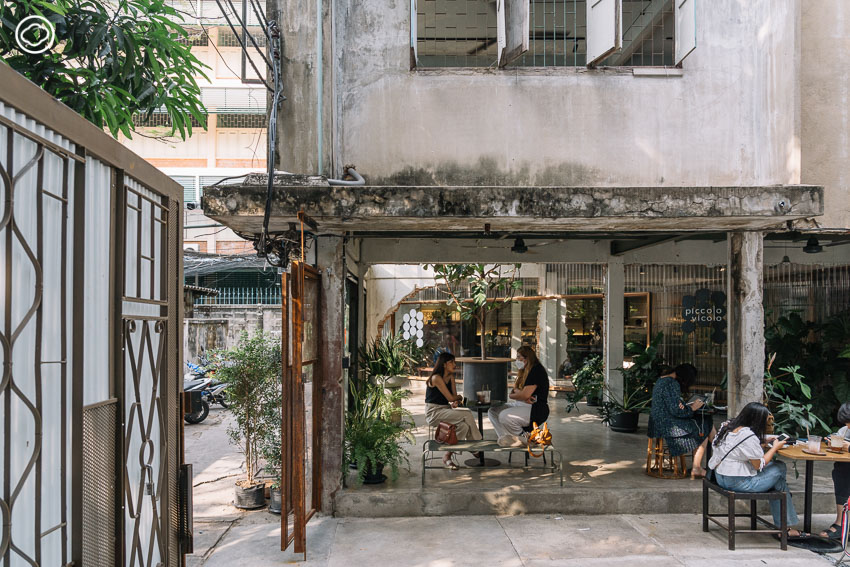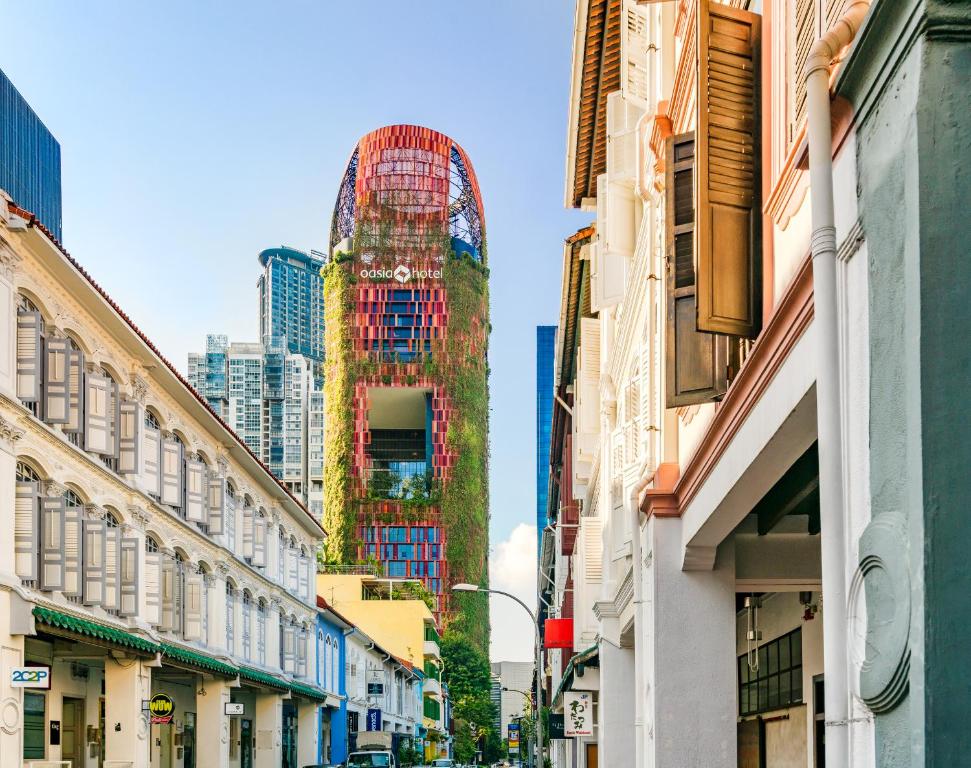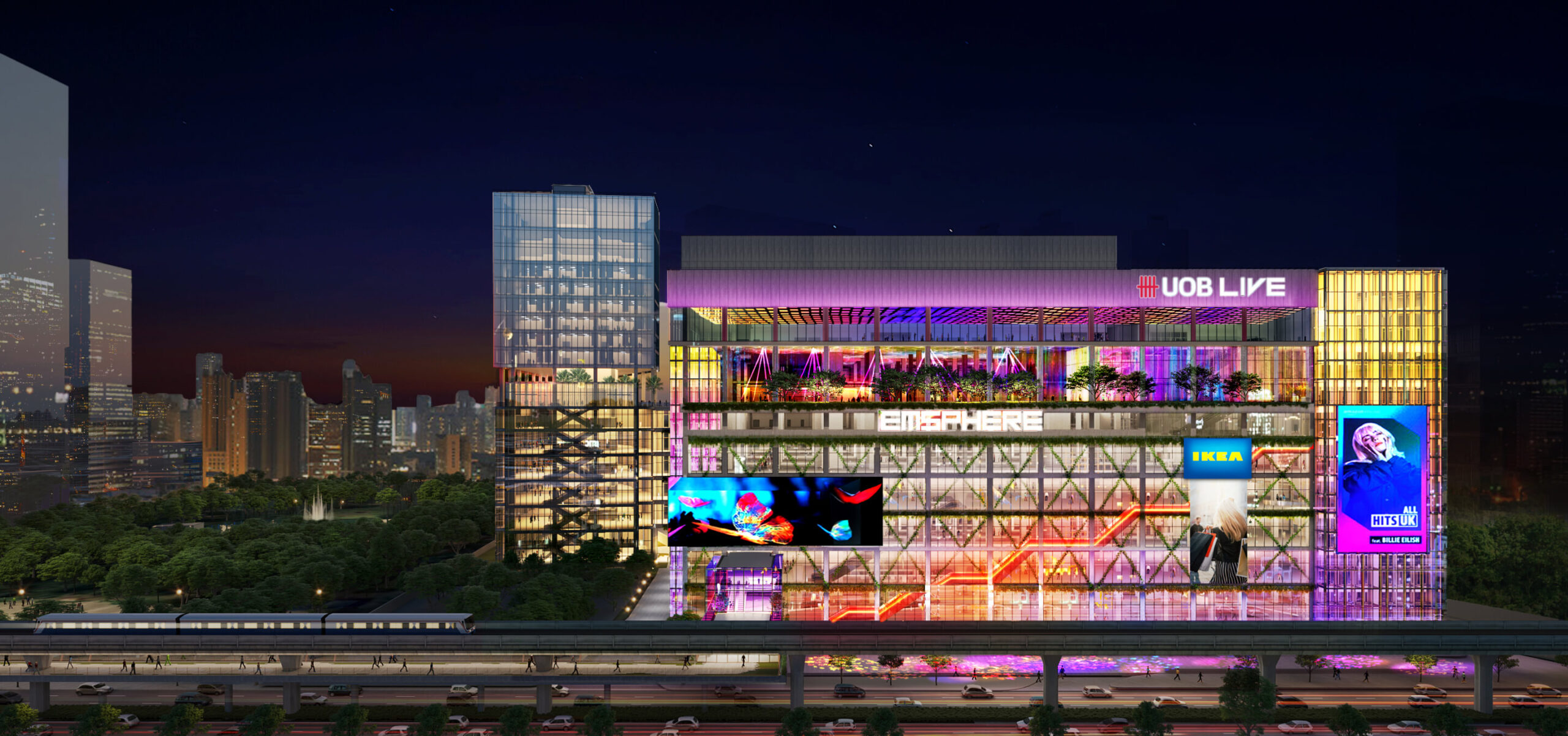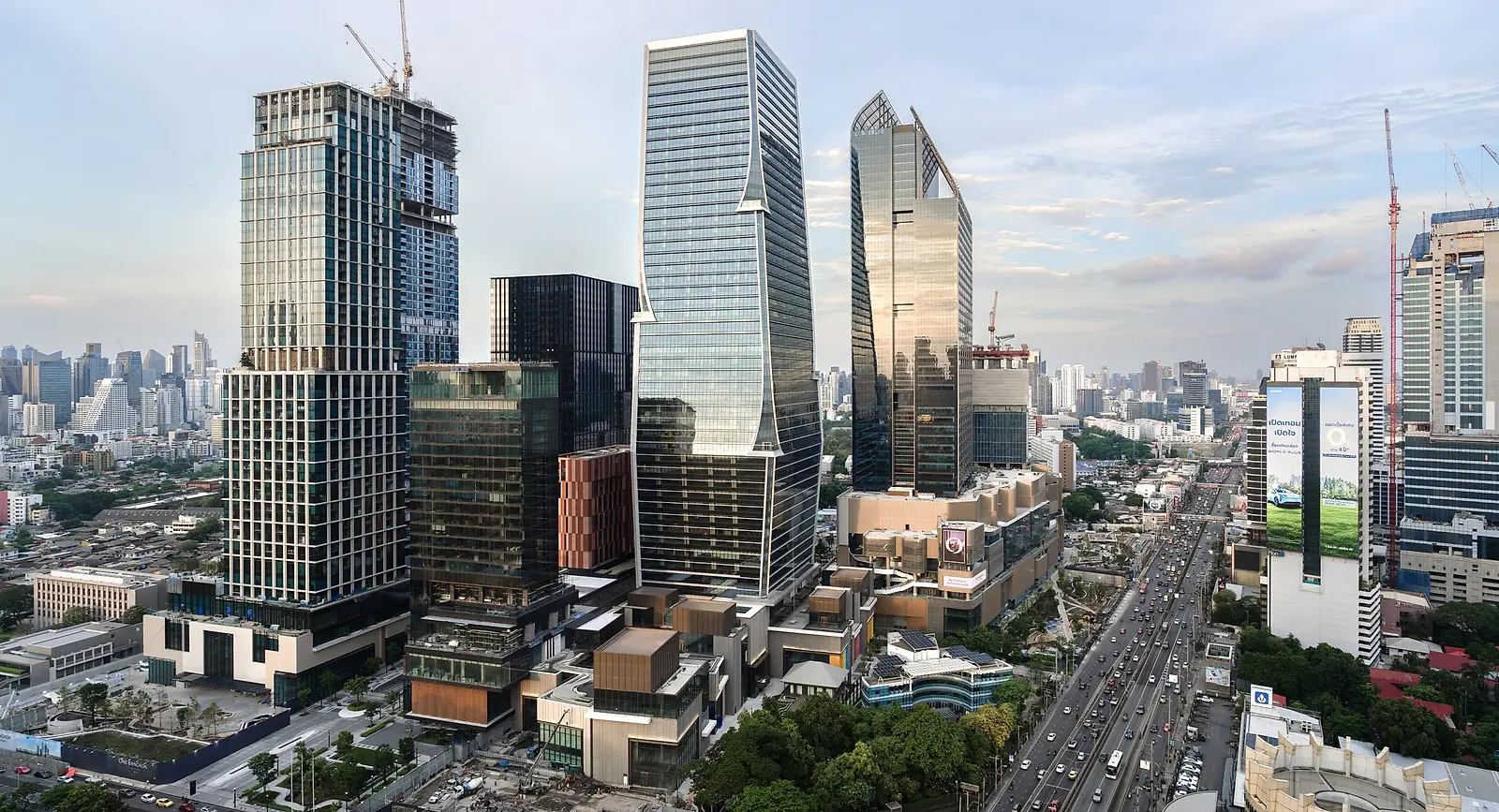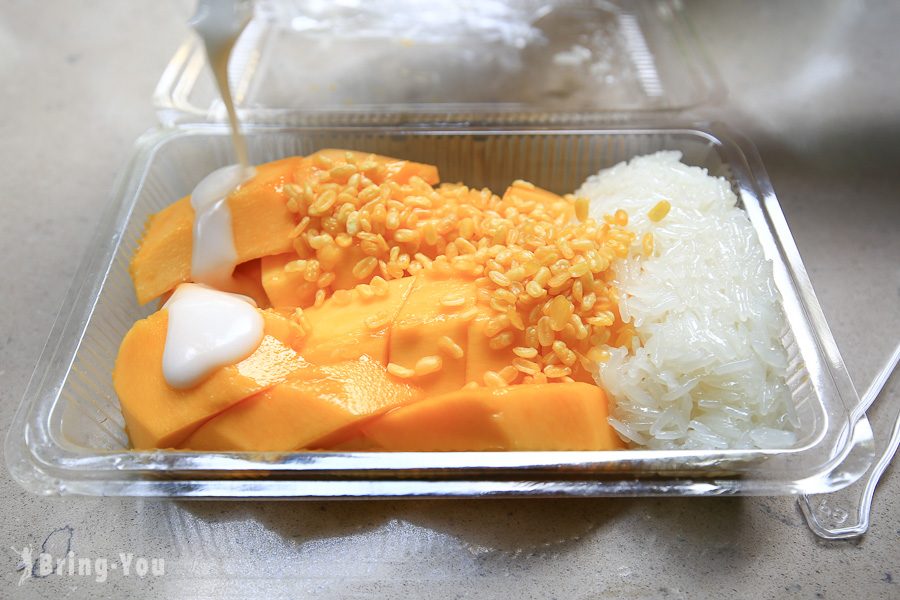
Episode 53: Flaneur | 曼谷:带你逛最国际、最本土、又最自然的街

所建所闻
Deep Dive
Why is Bangkok described as a 'patchwork city'?
Bangkok is characterized by its diverse and chaotic urban landscape, where elements like religion, massive shopping malls, steel city structures, and small natural spaces coexist. It’s a city where locals, foreigners, and international tourists all blend together, creating a vibrant and direct sensory experience.
What makes The Commons in Bangkok a notable community commercial space?
The Commons is known for its community feel, with large staircases where locals gather with friends, pets, and children. It emphasizes sustainability, pet-friendliness, and natural ventilation, offering a lively and inclusive environment despite its aging appearance.
How does Bangkok's commercial design incorporate nature?
Bangkok’s design often integrates nature seamlessly, with structures like aerial gardens and climbing vines that create an organic, harmonious relationship between architecture and nature, reflecting a Thai cultural and religious influence.
What role does religion play in Bangkok's urban spaces?
Religion, particularly Buddhism, deeply influences Bangkok’s urban spaces, with a focus on natural and man-made harmony. This is evident in designs that incorporate large gardens, climbing plants, and spaces that reflect a spiritual and cultural connection to nature.
Why is Bangkok's food industry so developed?
Bangkok’s food industry thrives due to cultural practices where many locals eat out rather than cook at home, supported by a service-oriented economy. Additionally, the city’s low land and labor costs allow for vibrant street food cultures and affordable dining options.
What is the average cost of housing in Bangkok?
In Bangkok, luxury apartments can cost around 35,000 Thai baht per square meter (approximately 7,000 RMB), while average downtown housing prices are around 20,000 Thai baht (about 4,000 RMB). Housing costs are relatively low compared to other major cities.
How does Bangkok's public transportation system cater to its residents and tourists?
Bangkok’s public transportation, including its light rail system, is relatively expensive and primarily serves tourists and higher-income locals. The system connects major tourist areas and commercial hubs, offering convenience but at a higher cost compared to other cities.
What are the typical living conditions for locals in Bangkok?
Locals in Bangkok often live in rental apartments, small detached houses, or row houses. Many cannot afford luxury apartments and instead reside in more affordable, densely populated areas, resembling urban villages with a mix of high-rise and low-rise housing.
How does Bangkok's design culture reflect its international and local influences?
Bangkok’s design culture is both international and deeply rooted in local traditions. It attracts global brands while fostering local ones, reflecting a balance between Western influences and Thailand’s unique cultural identity, similar to Japan’s cultural integration.
What is the significance of staircases in Bangkok's commercial spaces?
Staircases in Bangkok’s commercial spaces serve as both physical and symbolic elements, often used to create a sense of ritual and exploration. They are a key feature in public spaces, reflecting a cultural emphasis on upward movement and spatial engagement.
- 曼谷城市形态丰富多变,兼具国际化和本土特色
- 色彩斑斓、杂乱无章,高楼与老街并存
- 感官冲击强烈,五感全开
Shownotes Transcript
简介:
总说泰国商业很创新、很有趣,于是十二月我和几位朋友前往曼谷进行四天的考察。说是考察,但商业考察不就是(带着脑子去)逛街吗哈哈!
曼谷是热情的、明丽的、嘈杂的、粗犷的、浓烈的,我们的五感被完全打开,声色气味触感,无孔不入。曼谷的商业也沿袭了这些要素,一方面它十分的国际化,一方面它又扎根本土。在国内看来的很多创新手法,去到当地就会理解,其实只是把当地人的生活充分融入到设计里去,紧紧地把人和自然联系在一起。
这期节目就将带大家逛曼谷的这些最国际、最本土、又最自然的街!
干货攻略一张图:

本期嘉宾:翔仔、伍陆柒
本期提到的话题有:
泰国商业很“好逛”的原因是什么?
“非标商业”是个伪命题,个性化是泰国的常态
宗教信仰影响了自然和人造物的关系,也体现在城市空间特征上
泰国的餐饮为什么这么发达?
日本对泰国经济、政治、文化、商业的影响
曼谷的房价大概是多少?本地人都住什么样的房子?
曼谷当地人的生活状态是怎么样的
曼谷的公共交通系统
本期提到的项目:
The Commons Thonglor:富人区的社区商业)

Jim Thompson House Museum:美丽的居所,美丽的丝巾)

曼谷中国城的民居让人想到广州
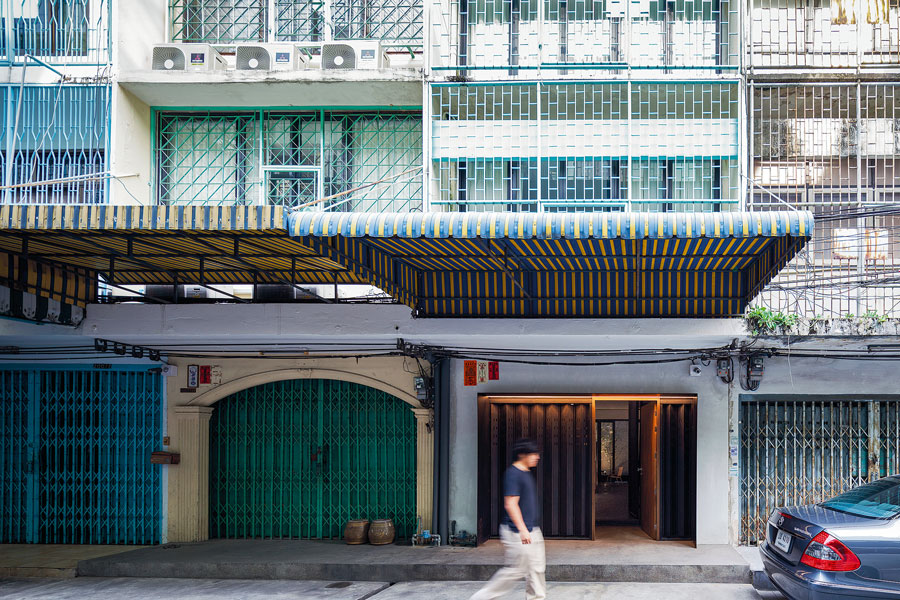
曼谷的轻轨系统 MTR 和BTS

备注:除攻略总结外的图片均来自网络
特别公告:
「所建所闻」节目迎来六周年了! 趁此机会做一些内容聚焦,未来将主要分为四个部分:
1. Builder:采访最近新落成项目的设计师 如 ep14-阿里巴巴西溪园区,ep31-杭州天目里,ep52-阿里巴巴上海园区
2. Creator:采访设计背景的创业者/空间运营者 如 ep38-家具品牌Donxi,ep48-尤扬:从设计到媒体到开餐厅
3. Flaneur:带有专业视角的旅行观察 如 ep5-南美,ep36-成都,ep45/50-山西大同,ep46-香港,ep47-新加坡,ep53-曼谷
4. Observer:其他当时当下关注的话题 如 ep29/32-历史保护,ep22-防疫建筑,ep34-奥运遗产建设,ep43/44-公共空间,ep51-迪士尼
收听方式:
推荐在泛用性播客客户端中搜索「所建所闻」订阅之后收听。 苹果手机推荐使用Podcasts、Overcast、Castro 安卓手机推荐使用AntennaPod、Pocket Casts、Castbox 此外还可以在「小宇宙」及Spotify上收听。
联系方式:
网站:architalk.xyz 邮箱:[email protected]) 新浪微博:所建所闻) Twitter:ArchiTalkXYZ) Instagram:architalk.xyz)



